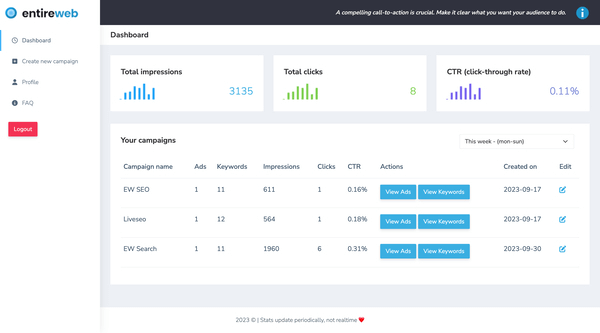Published April 4, 2024
1. Introduction to Search Advertising
Search advertising is a digital marketing strategy that involves displaying advertisements on search engine results pages (SERPs). When individuals search for particular keywords, relevant advertisements are shown alongside or often above or below the organic search results. These advertisements are often labeled as "sponsored ad" or "ad."
2. Understanding Bid-Based PPC Advertising
PPC advertising, commonly used in search advertising, often employs a Bid-Based cost model, like Google Ads. Here's how it works: Advertisers bid on keywords that are relevant to their target audience. When a user searches for those keywords, the search engine displays the advertiser's ad. The advertiser is charged only when someone clicks on their ad, which is why it's called "pay-per-click" advertising. In this model, advertisers have control over how much they're willing to spend on each click, allowing for flexibility in budget management."
3. Explaining Flat Rate Advertising
Flat rate advertising is a straightforward pricing strategy used by businesses to promote their products or services online. With this model, advertisers agree to pay a set amount for a specified duration of ad placement, regardless of how many people click on the ad or see it. Essentially, it's like renting a billboard – you pay a fixed fee upfront, and your ad stays up for a set period, whether it attracts a lot of attention or not.
However, it's important to note that even with flat rate advertising, advertisers still select specific keywords they want their ads to appear for. The amount of traffic their ad receives will depend on the popularity and competitiveness of the chosen keywords. For example, if an advertiser selects highly competitive keywords with a large search volume, their ad may receive more impressions and clicks compared to less popular keywords. However, it's important to consider that with more competitive keywords, the competition for ad placement is stronger which can results in less traffic than a less competitive keyword.
Despite the lack of performance-based pricing, flat rate advertising offers predictability and simplicity for advertisers. They know exactly how much they'll spend on advertising without worrying about fluctuations in performance metrics like clicks or impressions. This can be particularly beneficial for businesses with fixed advertising budgets or those looking for budget certainty in their advertising campaigns.
4. Pros and Cons
Flat Rate Advertising:
- Pros:
- Predictable costs: Advertisers know exactly how much they'll pay, regardless of performance.
- Simplicity: Flat rate pricing is straightforward and easy to understand.
- Cons:
- Limited flexibility: Advertisers may miss out on opportunities to optimize campaigns based on performance data.
- Potential for overpaying: Advertisers may end up paying more than the actual value of clicks or impressions.
Bid-Based PPC Advertising:
- Pros:
- Flexibility: Advertisers can adjust bids based on performance data, allowing for optimization and improved ROI.
- Targeted reach: Bidding allows advertisers to target specific audiences more effectively.
- Cons:
- Competition: Highly competitive industries can drive up the cost of bids, making it expensive for advertisers to compete.
- Complexity: Managing bid-based campaigns requires knowledge of bidding strategies and analytics tools.
5. Conclusion
In summary, flat rate and bid-based PPC advertising offer distinct approaches to online advertising, each with its own set of advantages and disadvantages. While flat rate advertising provides predictability and simplicity, bid-based advertising offers flexibility and targeted reach. Ultimately, the choice between the two depends on the advertiser's goals, budget, and level of comfort with managing PPC campaigns.
Published April 4, 2024

